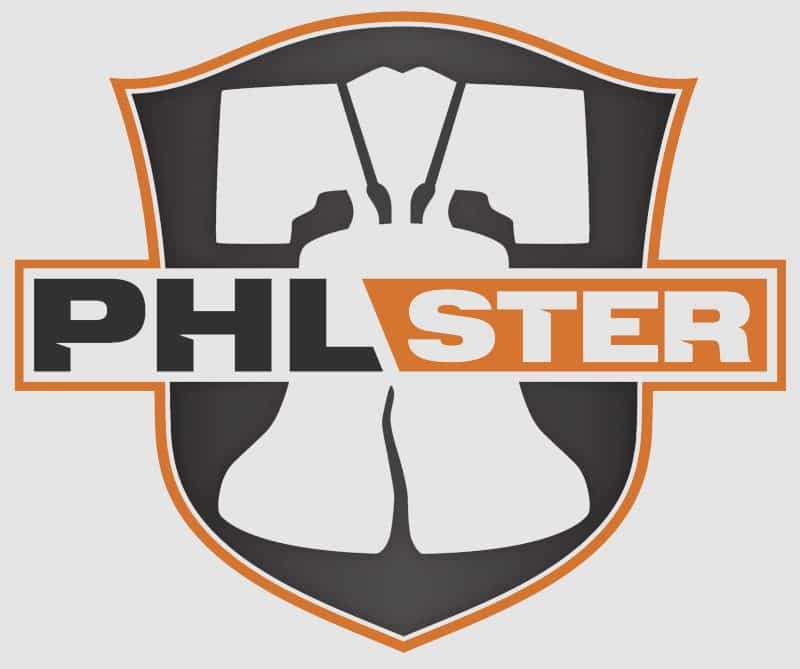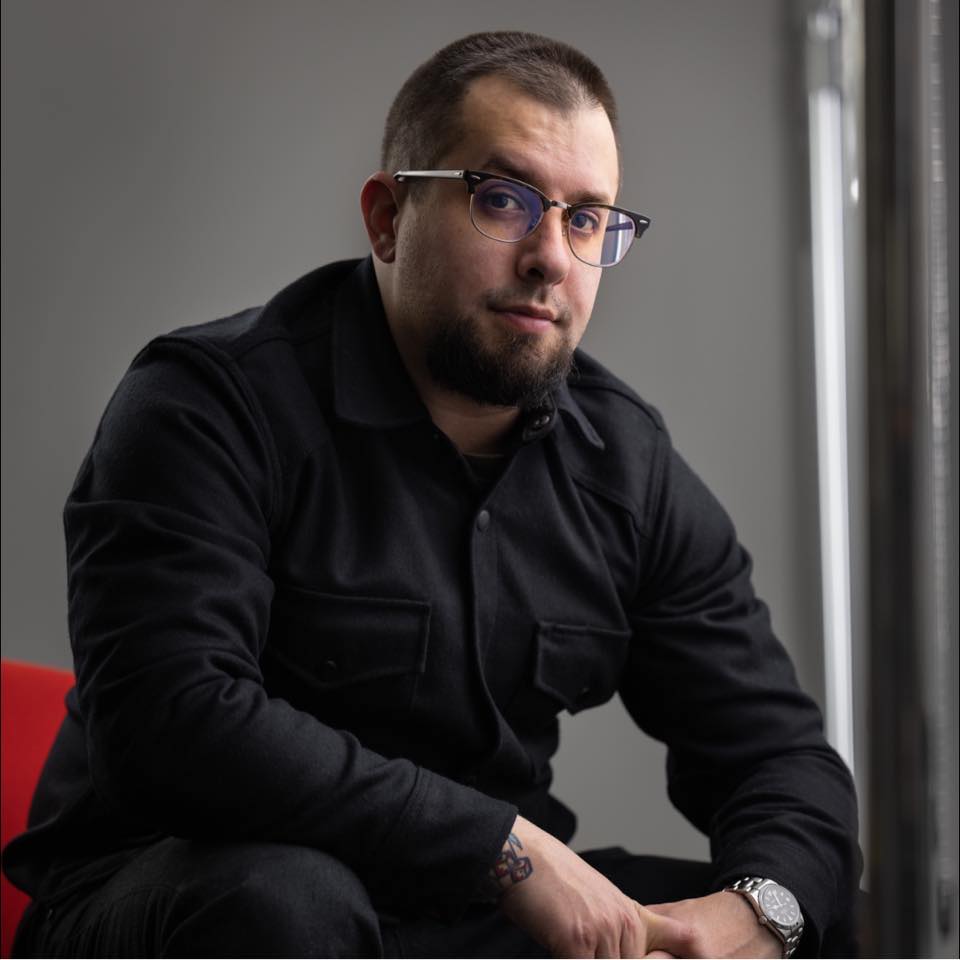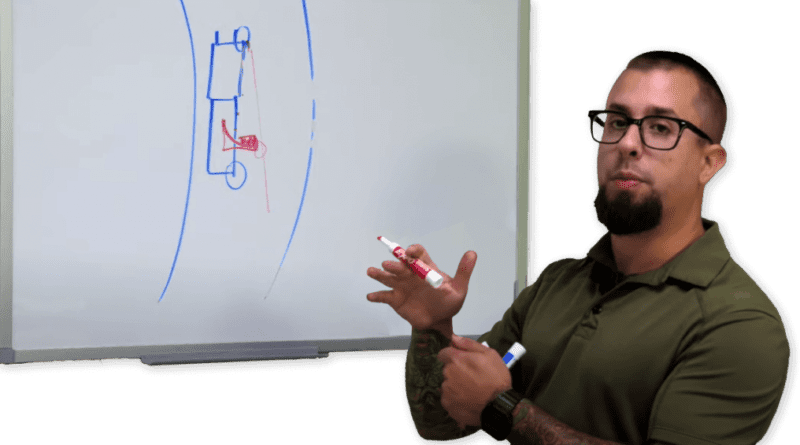Jon Hauptman Talks PHLster and Improving Concealed Carry
You can call me a fan-boy, I really don’t care. But when I was first introduced to PHLster through Jeff Bloovman, I was intrigued. Watching Jon Hauptman go from someone on YouTube who was helping others learn how to make holsters through his own trial and error, to now one of the industries greatest minds when it comes to building concealed carry holsters, is nothing short of amazing. It also doesn’t hurt that he’s from Philadelphia (he’s now moved out of state but I won’t hold that against him), which is where the “PHL” in his company name stems from.
With all of that being said, Jon Hauptman was gracious enough to put aside some time for this interview that I’d like to share with you. So, without further ado, let’s talk holsters and concealed carry with the owner of PHLster, Jon Hauptman. I hope you enjoy the interview!

The King of Concealment Innovation — Jon Hauptman, owner of PHLster
1. For those who aren’t familiar with PHLster, can you tell us a little bit about what you do and how you got started?
Jon Hauptman: PHLster really got started back in 2012/2013, and this relates to question #2 quite a bit. I started carrying and training in about 2010, and like many new gun owners, I was trying out and buying different guns. While in that phase of not really knowing what I wanted and probably changing guns too frequently, I ended up buying and trading stuff to find what I liked.
The really great “must-have” Kydex holsters all had really long lead times, and I just wasn’t patient enough and wasn’t committed to any particular gun enough to want to hang on to it for long enough to wait out the lead times. I was an auto mechanic at the time, and one of the lessons I had learned was that you never wanted to be the first person to work on a new problem on a brand-new car. It was a real benefit to watch someone else go through it first. And back in 2010, YouTube was booming and just a few years old, but there weren’t any good tutorials on how to make a Kydex holster.
Related Article: Active Shooter Training — 3 Split-Second Lifesaving Options
There were a couple of forum posts here and there about knife sheaths but no in-depth instructional resources for how to get started. I had gone to art college before becoming a mechanic, and I decided that I was going to be The Guy who everyone could watch struggle through it, and I should be able to figure out how to make a functional holster within the same 16-week lead time as it took to buy a good one.
So, I started fumbling through it and posting all the experiments on YouTube. And during that time, I encountered other people who were teaching themselves this process, found all the technical information buried on the Kydex materials website, sharing information with my peers, and we all kind of started to figure out how to make decent holsters out of Kydex.
At some point in there, the results started to be pretty, well, not bad, and viewers of the channel started asking for custom holsters. So, I obliged them, and one day I noticed that I had gotten paid more to make holsters that day than I had earned wrenching on cars. That went on for a couple of months, and I got tired of wrenching all day and then staying up until 3am making holsters every night. I figured I’d give it a shot full-time and eventually put together a couple of pretty major videos on the entire process of how to make Kydex holsters.
2. If my memory serves me correctly, back in the day, you were actually teaching people via YouTube how to make holsters while still owning and operating your own holster company. What made you want to help others build quality Kydex holsters rather than keep the information to yourself?
Jon Hauptman: Well, the industry was pretty small back then. None of us hobby-sized makers had access to any real economy of scale. For instance, we weren’t getting Kydex in cool colors like the bigger companies. Stuff like molds and process-specific tools weren’t commercially available to us.
I got the contact info for someone at one of these suppliers and put the word out to my YouTube viewers to email him with requests to stock Kydex sheets in coyote tan. The next morning, he emailed me to tell me how full his inbox was and that they’d be stocking it in sufficient quantities for all of us.
I didn’t have any purchasing power on my own to meet the minimums for any of this or to get really involved in making specialty molds from scratch. But, if an entire market for these things existed, then I’d benefit from that.
Now, you can get this stuff in whatever color or pattern you want, get exactly the right hardware, there are tons of pre-made injection molded hardware and belt attachments, and there’s a whole industry for molds.
The average quality of Kydex holsters from the hobby level to the professional level has increased dramatically over the past 10 years. Producing a decent holster isn’t the hard part, nor should it be. If your only advantage is, “I know how to mold Kydex, and I have a source for cool colors,” that’s not going to last very long. The concepts and executions are where the competition is, which I think is much more fun and interesting.
The video below is a flashback from 10 years ago announcing his launch. But if you haven’t subscribed, click here to head over to their YouTube page.
3. Searching the internet, I’ve found other companies that are trying hard to copy your products and profit from your innovation. Does it bother you that other brands are blatantly stealing your ideas?
Jon Hauptman: I honestly don’t see a whole lot of that, myself. And when do I see it, it doesn’t really bother me. In fact, it’s a positive signal.
As I said, command of the material process and understanding the basics of design best practices isn’t the field in which competition is occurring. That’s just basic prerequisite stuff, so there’s going to be some inherent similarity in the market. And there are materials limitations.
Like, any Kydex holster design is limited by the process of using a sheet of material to make a holster shape. At any given moment, if we’re limited to using sheet material to get holster concepts as advanced as we can, to some degree, we’re always producing something obsolete. So, anything that I’m designing and making is a concept that is limited by the process which is available to me, or the design itself is introducing a concept and practice which I expect to build on in the future, with several subsequent product generations in mind.
If something is being copied, that tells me that 1) we’ve established a new best practice, 2) the market understands the concept enough that it’s worth copying, and 3) customers are primed to understand and want the next generation product (which is already planned and in the works).

4. I don’t expect you to toot your own horn, but you have some of the best holsters and concealment options in the industry. How do you develop and execute your ideas to continually innovate and launch new products?
Jon Hauptman: Thank you! There are a couple of important things which I think we do really well — collaboration and asking questions. We’re not a closed, insular operation. We’ve always worked closely with instructors and professional end-users to test concepts and executions and to learn about their needs and requirements. And a product like our Enigma is a great example of collaboration.
A good friend of mine who runs Runcible Works was making these really complex and bespoke systems for carrying a gun under any clothing, with an integral belt system. They were all handmade, labor-intensive, and difficult to obtain. And a few years ago, I approached him and asked if he wanted to work on a solution that might bring this kind of concept to the masses.
Related Article: PHLster ARC — Enhanced WML Paddles for Streamlight TLR Series
In working through that process, he and I, along with my wife Sarah, who helps run PHLster with me, came up with an entirely new product that bears only a passing resemblance to the original product. And then, we collaborated with professional end-users to refine the design and collaborated with manufacturing partners to make the product more efficient to produce.
And throughout this process, we’re always asking questions. Like, “why is it like this?” “Is this a materials limitation?” “Is this an unexamined assumption about concealed carry?” “What actually needs to take place when we’re carrying a gun?” “Is there another field of practice (like prosthetics and orthotics, for example) that does this same thing better than us?” And, of course, we’re in constant collaboration with our customers.
The PHLster Concealment Workshop group we have on Facebook is like a concealed carry laboratory. We constantly gather information, test theories, and identify trends that inform future designs.
5. What are your thoughts on people saying you need to dress around your gun, such as by wearing baggy clothing, etc.? Do you buy into that, or do you feel that you can conceal just about anything with the right holster and placement (within reason)?
Jon Hauptman: What I see most frequently is people just not dressing around themselves first. And this relates to the next question, too. We attach guns to our clothing (our belt, and therefore pants) entirely by default. That’s a happenstance of wearing pants and belts to hold them up, and people have been putting stuff on their belts since forever.
Where your belt encounters your body is not, by any means, automatically the ideal place on your body to comfortably conceal a pistol. This is especially true when it comes to low rise jeans, or wearing one’s pants too low, for instance.
Related Article: Are Online Concealed Carry Course Actually Worth Taking?
The number of comfort and concealment issues we fix for people just by recommending that they wear their pants at the actual proper height is really significant. This positions the pistol slightly higher on their torso, keeping it out of the groin and positioning it on a flatter part of their body instead of allowing the curves of their body to tilt the gun outward and print through their clothing.
6. For people like me (and probably many reading this), we’ve tried a bunch of different holsters from various brands but just weren’t happy with them, so they now sit in a box. You talk about peaks and valleys that can help solve many concealment issues. Can you explain that in a little more detail?
Jon Hauptman: Frankly, it’s rarely JUST the holster itself causing the issue. You can make just about any holster work by applying basic concealment mechanics. For the best results, you’ll want to start with a holster that supports the use of those mechanics, but with enough knowledge and tweaking, you can make some of the cheapest holsters on Amazon conceal comfortably.
It starts with identifying the place on your body that has the most concealment potential (and not letting the happenstance of your clothing dictate where the gun goes). And from there, we have a really easy self-diagnostic process for figuring out what you need to do to cause that gun to conceal.
Related Article: Is the Sig Sauer P365X the Best Concealed Carry Firearm?
It’s not a matter of trying different holsters until you luck into something. Imagine if you walked into the gym and just saw everyone flailing around at random until they lucked into an effective exercise. That’s what we’ve been TOLD learning concealed carry is like, but it doesn’t need to be.
We’ve put together some great educational resources here with videos and graphics to help people skip the guesswork.
7. Most of my readers and followers are interested in health and fitness. Carrying a firearm during workouts can be quite challenging. You’ve seemed to solve this issue with the PHLster Enigma. Can you discuss what the Enigma is and how the versatility can cater to an audience who spends a lot of time in the gym and working out?
Jon Hauptman: The Enigma is a concealed carry system that is worn under the clothing, independent of a conventional gun belt. Unlike an elastic belly band or compression shorts with a “gun pocket” or similar, the Enigma uses a proper secure and rigid Kydex holster which is secured to an ultra-thin, flexible, and strong faceplate that restrains the holster to the body and applies pressure to the holster in all the right places to cause it to conform to the body and conceal. It’s then secured to the body with a thin nylon belt. And to prevent the rig from moving, shifting, or pulling up when you draw, there’s a thin and unobtrusive leg leash. So even if you’re pulling guard, fighting from the ground, or in a grapple, the gun is right where it should be and releases cleanly from the holster.
Related Article: PHLster Enigma — The Last Glock Holster You’ll Ever Need
Unlike an elastic belly band, the gun doesn’t bounce around when you move, it doesn’t ride up when you squat, and the rig doesn’t get unbearably sweaty. So, you can position the pistol where it’s most concealable, gives you the most mobility, and you won’t have a floppy gun beating you up when you jog. It looks as weird as it sounds, I know.
8. You have created an amazing community through your Facebook Group. What has the support of the group members and the information/suggestions they provide you and others with mean to the PHLster brand?
Jon Hauptman: The PHLster Concealment Workshop is an amazing laboratory for us. It’s really accelerated our understanding of concealed carry.
As a maker, it took YEARS to figure a lot of this stuff out when that laboratory consisted of a few people stopping by the holster shop a week to have something custom-fitted, and developing practices and strategies from those individual fittings.
Doing that at the scale of thousands of people a month seriously turbocharges our ability to craft helpful teaching language, identify trends, see how people put knowledge into practice, learn about how human bodies interact with holsters, and observe people using our methods to teach and help each other conceal better.

9. Where do you see PHLster in the next five to ten years?
Jon Hauptman: If you had asked me that five years ago, I wouldn’t have been able to predict where we are now with even the slightest accuracy. I’m mostly focused right now on taking the information we’ve developed and combining it with new resources and processes to execute the next generation of products, and we’ll see what happens after those exist.
10. For those who want to follow PHLster and everything you guys are doing over there, what’s the best way for them to connect with the brand?
Jon Hauptman: Of course, we’re on Facebook and Instagram.
But the absolute coolest thing we have going is the PHLster Concealment Workshop Facebook group. Almost 17,000 members are helping each other improve their experience of concealed carry, with whatever gear they happen to have, by applying our repeatable diagnostic process. It’s pretty incredible to see.


*Disclosure: This article may contain affiliate links or ads, which means we earn a small commission at no extra cost to you if you make a purchase through these links. These commissions help support the operation and maintenance of our website, allowing us to continue producing free valuable content. Your support is genuinely appreciated, whether you choose to use our links or not. Thank you for being a part of our community and enjoying our content.
PLEASE CONSIDER SHARING THIS ON YOUR SOCIAL MEDIA TO HELP OTHERS LEARN MORE ABOUT THIS TOPIC. SIMPLY CLICK BELOW!

